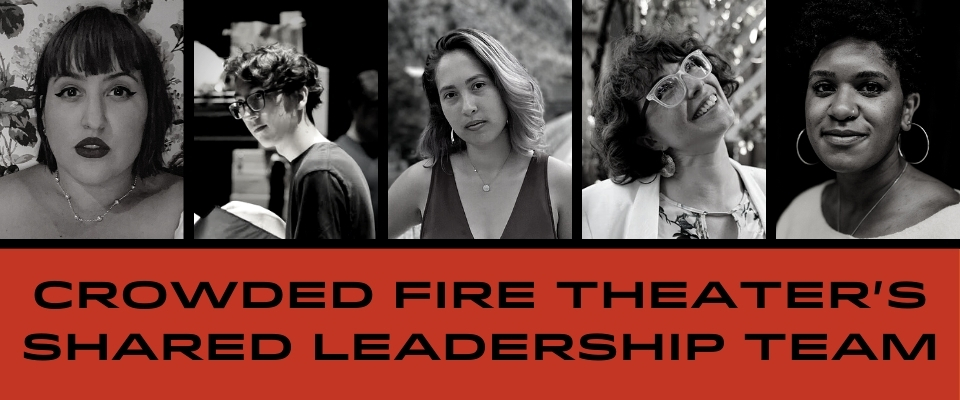Crowded Fire’s Shared Leadership Model
The theater field is undergoing momentous transformation in leadership positions nationwide. Recognizing this opportunity, we seek to disrupt systems of gate-keeping and power-hoarding upheld by people in leadership positions (traditionally white male-held roles) by empowering an incoming generation of historically-marginalized future leaders who are questioning the very structures of those systems.
As institutions sustaining ourselves largely with public funding, and therefore held in the public trust, we have a responsibility to ensure that our artistic work exceptionally and boldly engages in the concerns and complexities of our often under-represented communities. This means supporting the vision of leaders who are a part of these communities and naturally serve with this at heart.
Along with this long overdue transformation, many organizations are realizing the challenges of opening up the trappings of traditional gatekeeping as we seek to build a more inclusive, trusting, and embracing relationship with the communities we are seeking to serve. There is a new awareness that hardened hierarchies are an obstruction to true change.
There is also a rising concern that many organizations are hiring women, LGBTQIA+, and BIPOC identifying leaders without the structural, relational, and financial resources to give said leaders the time to fully step into the role and specific needs of that organization and thrive. It has been an ongoing pathology in our field to expect an individual to come up in an artistic and administrative leadership role without adequate support, requiring nearly double the effort of a full-time job to find their footing. These leaders are often tokenized, expected to take responsibility for the actions of their predecessors, and left holding the labor of repair and rebuilding trust with their wider communities. It is not a sustainable practice, especially as we recover from this pandemic.




